The next day we visited mountain villages and got to see another luxurious hotel with fabulous views.
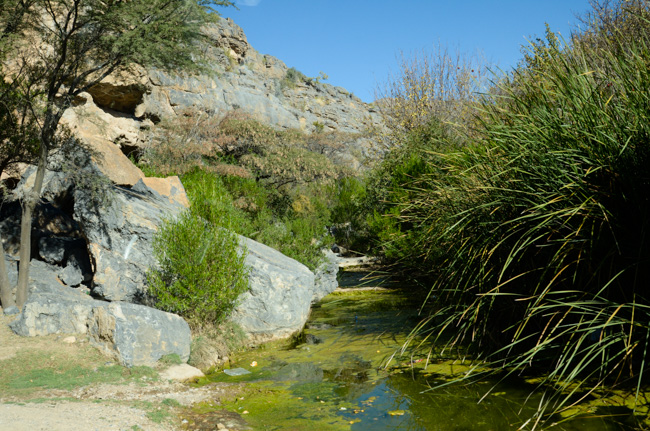
In the morning we were back on the road for the day's adventures. I did not expect to see permanent streams in the desert mountains, but we crossed one on our way to our first stop. The tenacity of vegetation in harsh environments always amazes me.
So why can't I grow a %@#* eggplant in Virginia?
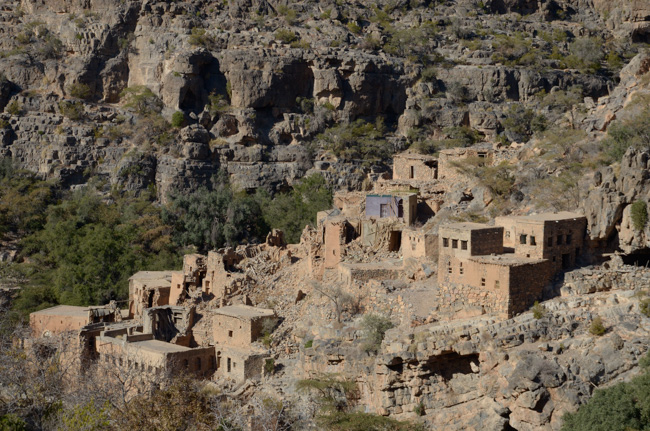
Our first stop was an overlook of Wadi Bani Habib. To my frustration we did not have time to walk into the wadi to explore the abandoned villages directly.
Most of the villages were deserted because of easier jobs and better housing in the cities, but this one had additionally suffered from British air strikes during the Dhofar Rebellion in the 1960s. The rebellion ended when the current sultan deposed his father and organized both a better military response and a successful "hearts and minds" campaign to unify the country.
The sultan has continued to focus on keeping the peace within the country and was thereby able to avoid the most radical effects of the Arab Spring of 2011.
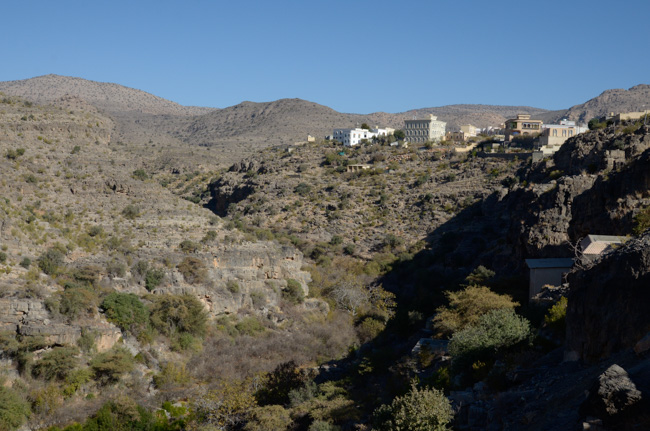
The modern village overlooks the wadi. It appeared that there may have still been some small gardens down close to the stream bed.
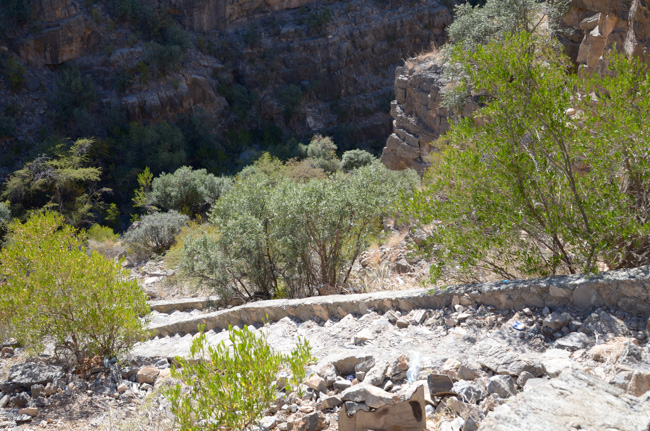
The way into the wadi may have had some effect on the decision to keep us all from scrambling down. Steep steps had no handrails and were much deteriorated. I had to step carefully to go down and get a picture and I was in much better condition than many of our group. Didn't think to bring my hiking poles on this trip!
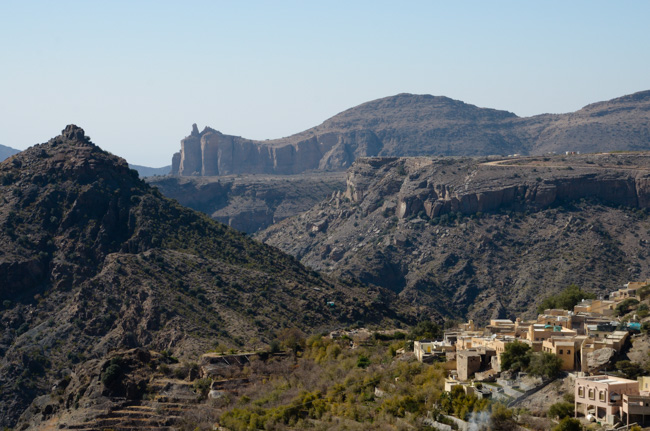
Our next stop was Wadi Al Ayn where I got my wish for a hike. We walked through one ancient village, past their fields, which were maintained as terraces, and through another village on the other side of the wadi.
The mountain scenery was spectacular.
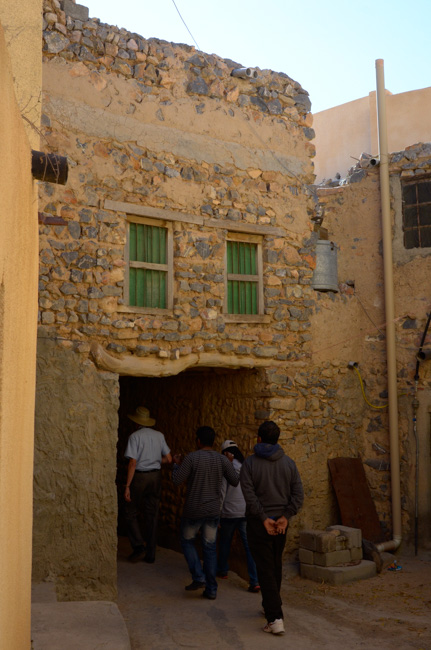
A larger number of buildings were still occupied in Al Ayn than in the portions of Al Hamra that we visited. We were not the only tourists. There was an Indian family also wandering through.
Signs at the entrance to the village warned tourists to respect the privacy of the residents.
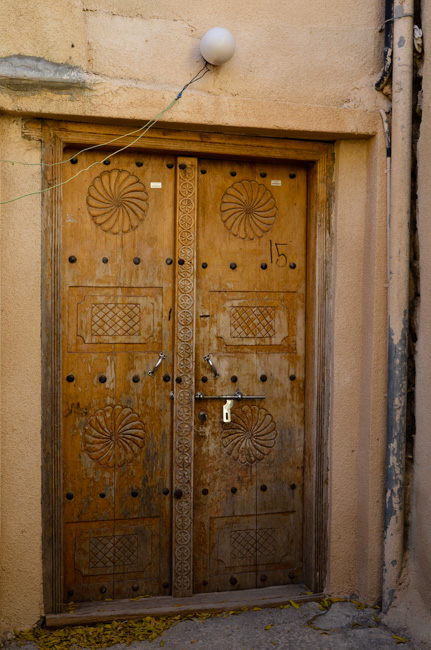
We saw many beautifully carved doors throughout our travels. This one was typical.
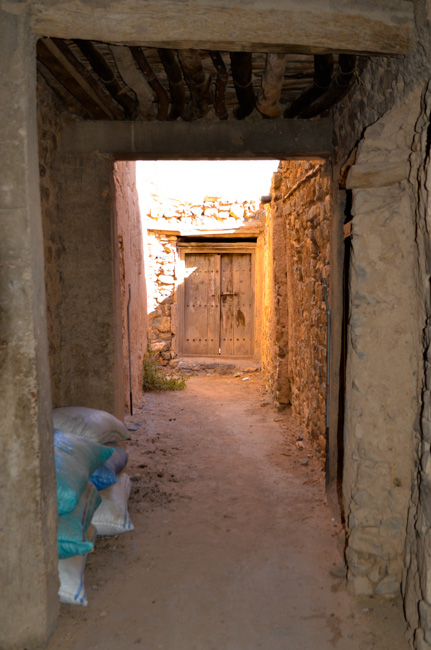
A side "alley" in the village.
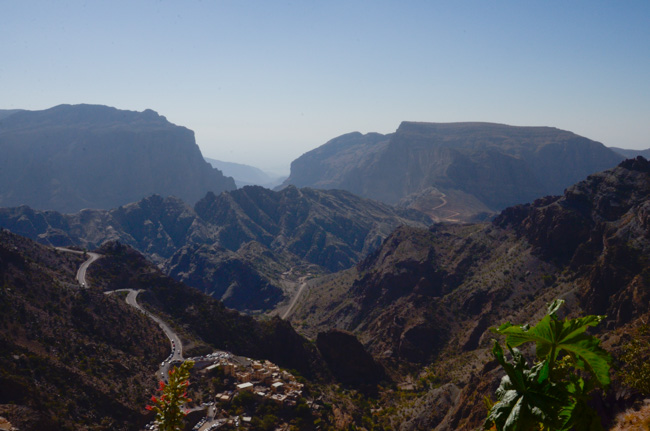
As we walked out of the village, we looked down the wadi into another village. Tiny villages perched everywhere in the countryside
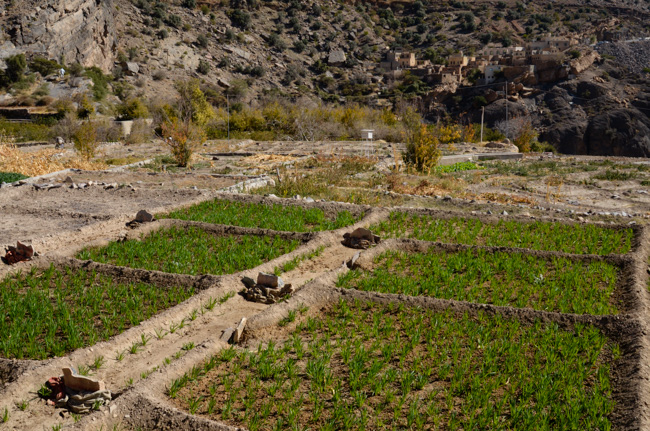
Dikes surrounded planting areas to facilitate irrigation. Ditches between the enclosed areas channeled the water. Rags and stones in the channels divert the water to specific plots. We were told that the water is measured out by time. After an allotted period blockages are relocated to flood another area.
These are onions. Other food crops included garlic and maize. We also saw pens for small numbers of goats and sheep.
The major cash crop in the area is rose petals! The petals of the fragrant roses are used to distill rose water, an essential ingredient in much Middle East cuisine. There were nearby fields full of rose bushes.

As we left the village we scrambled up this rocky stream channel. Our tour organizers later said that the local guides hadn't emphasized the difficulty of this portion of the trail. It actually wasn't difficult, but many folks were intimidated. They all expressed delight, however, that they were able to negotiate the rocks successfully.
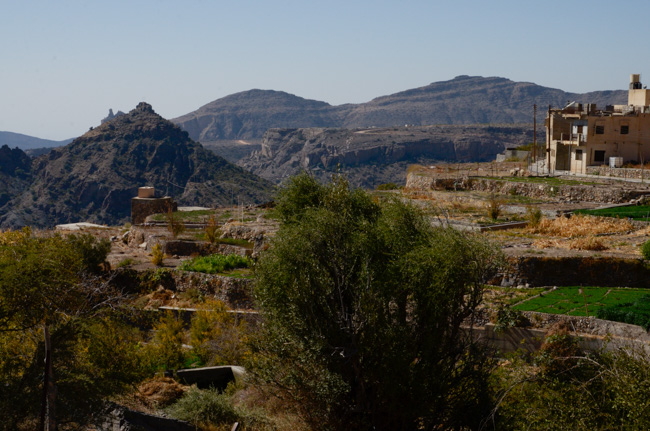
Looking back over the village fields as we crossed the dry stream.
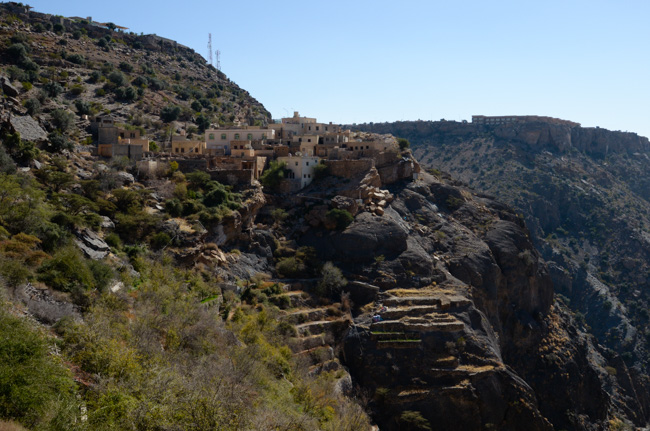
Looking forward to the next village.
The path ran precariously along this steep slope, but a sturdy chain link fence provided protection from slipping down the precipice.
Terraces punctuated the slope. There were people cultivating some of the terraces, but others looked abandoned.
The long building along the ridge in the background is the hotel where we will have lunch.
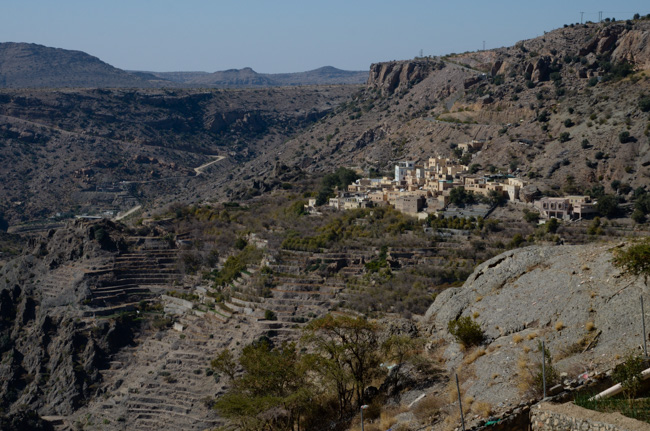
Looking back, even more terraces are visible below the first village. Most looked like they had been abandoned for decades.
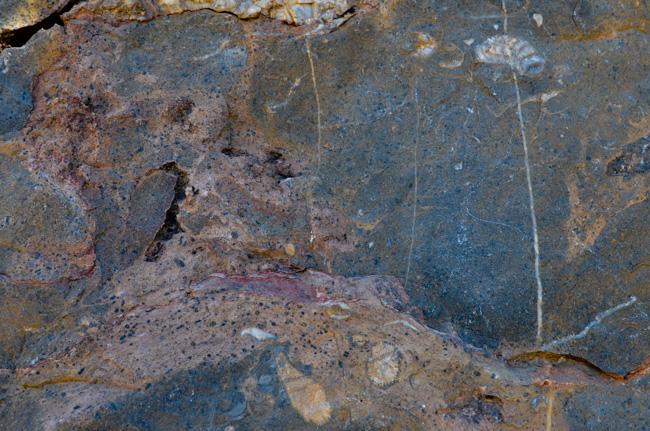
Along the way we passed an area of rock with marine fossils from ancient times. As noted earlier these mountains had once been part of the ocean floor. Tectonic obduction pushed the sea floor up over the continental landmass.
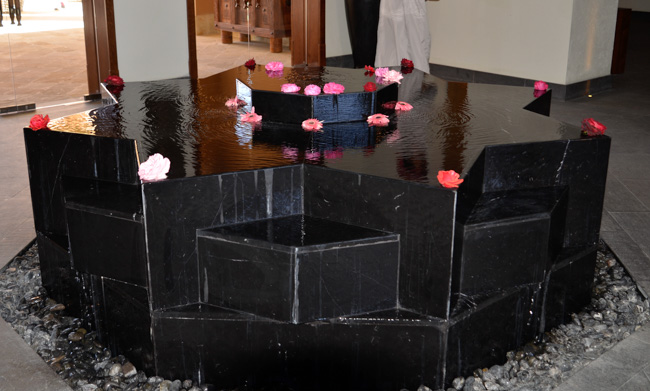
Our lunch location was the Anantara Resort Hotel, a newly built luxury hotel. This elaborate fountain celebrating the rose heritage of the region was in the foyer as we entered the hotel.

We arrived a bit early so we had time to wander around. This is the view across the wadi from a location called Diana's Point, named after Diana, Princess of Wales. According to a plaque at the site, Diana and her husband Charles visited the area via helicopter in 1986. At that time it was completely undeveloped.
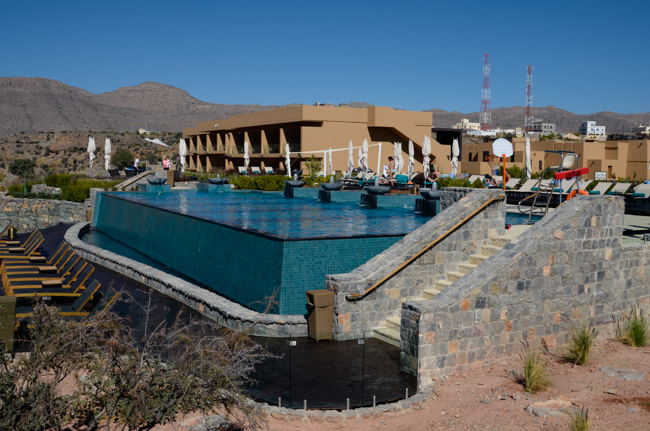
"Infinity pools" are a popular feature of these high-end resorts with fabulous views.
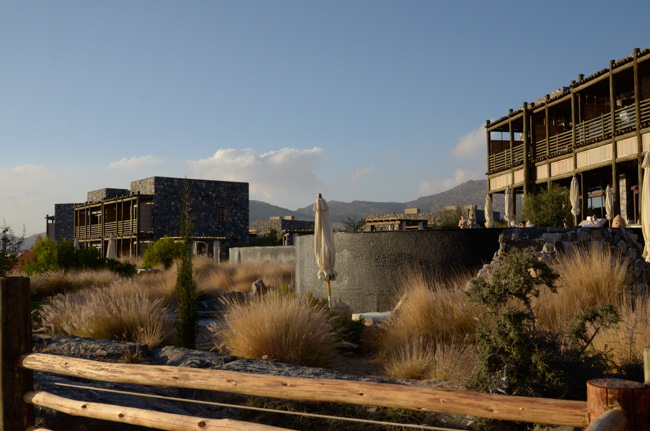
After lunch we returned to the Alila for a free afternoon. Our infinity pool had a somewhat different character. The design of the hotel buildings, which used stone and wood, was very similar to some older stone buildings that we saw during our travels. The landscaping definitely emphasized desert plants. Click to see some of them.
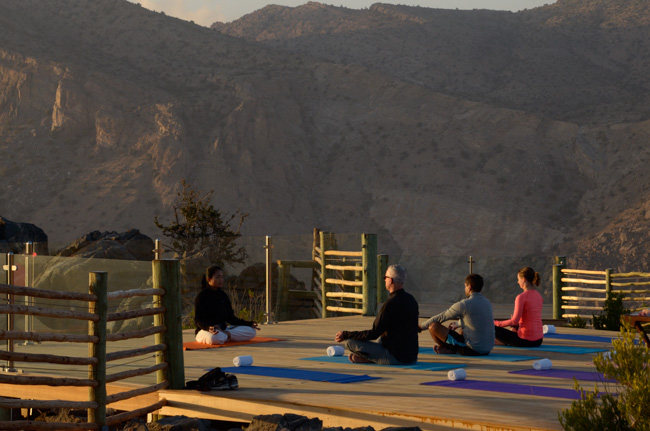
At dawn and sunset every day the hotel hosted a yoga session on a platform overlooking the canyon. It was a meditative and peaceful location
Click your "back" button to return to the previous page or click for our picture album.